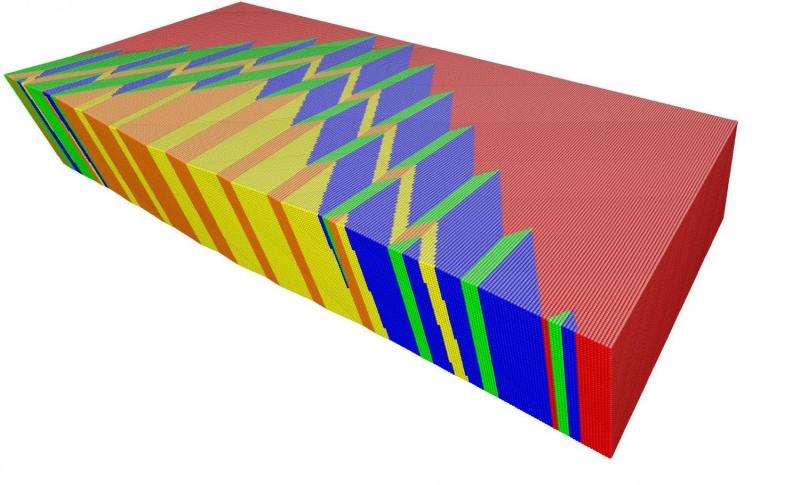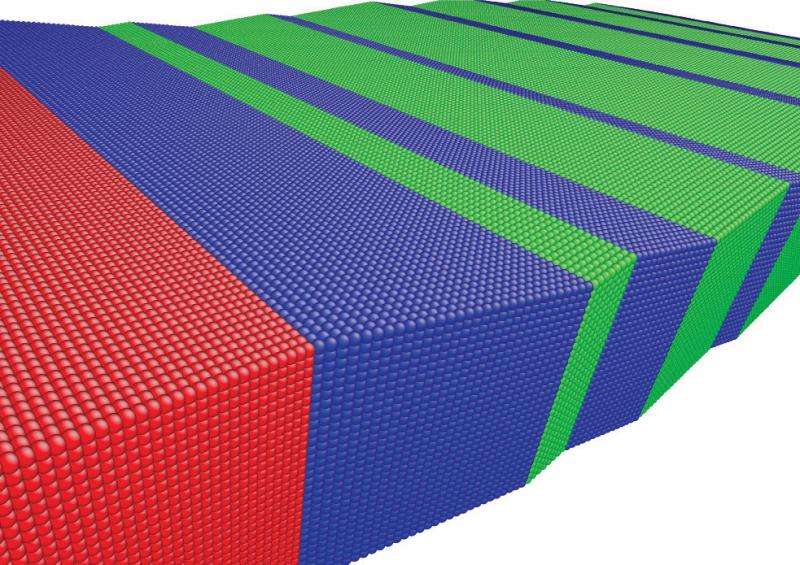May 29, 2015 report
Memory shape alloy can be bent 10 million times and still snaps back

(Phys.org)—A combined team of researchers from the University of Kiel in Germany and the University of Maryland in the U.S. has created a shape memory alloy that is able to be bent and snap back to its original form up to ten million times. In their paper published in the journal Science, the team describes how they came up with the alloy and why they believe it could have a wide variety of uses. Richard James of the University of Minnesota offers a Perspective piece on the work done by the team in the same journal issue.
Memory shape alloys got their name by the unique property of being able to be bent and returning to their original shape automatically. Such metals can have their shape altered by subjecting them to physical bending, or by heating them. Up till now, no such alloy was able to snap back after being subjected to bending more than a few thousand times—scientists would like to bump that number up significantly because it would allow for creating devices that are more durable—artificial aortic valves, for example, or as a replacement for liquids in refrigerating devices. But despite a lot of effort, no one had been able to find a way to make that happen.
The researchers with the team readily acknowledge that their find was largely luck, they were tinkering with different mixtures, in this case, adding a little bit of cobalt to an already existing alloy made of nickel, copper and titanium. The resulting alloy surprised them during initial testing. Because such an alloy had never been created, neither had a means for testing its durability—they had to come up with two types of testing devices, one to repeatedly bend and allow for release, very quickly and another for heating and cooling. Both types of tests wound up having to run for weeks to reach the ten million mark.

It is not yet clear why the new alloy has such super bending properties, but the researchers suspect that it has to do with its ability to switch from one crystalline form to another, and then of course, back again without suffering from molecular knots, which for most alloys introduce imperfections, which lead to failure.
More information: Ultralow-fatigue shape memory alloy films Science 29 May 2015: Vol. 348 no. 6238 pp. 1004-1007 DOI: 10.1126/science.1261164
ABSTRACT
Functional shape memory alloys need to operate reversibly and repeatedly. Quantitative measures of reversibility include the relative volume change of the participating phases and compatibility matrices for twinning. But no similar argument is known for repeatability. This is especially crucial for many future applications, such as artificial heart valves or elastocaloric cooling, in which more than 10 million transformation cycles will be required. We report on the discovery of an ultralow-fatigue shape memory alloy film system based on TiNiCu that allows at least 10 million transformation cycles. We found that these films contain Ti2Cu precipitates embedded in the base alloy that serve as sentinels to ensure complete and reproducible transformation in the course of each memory cycle.
Journal information: Science
© 2015 Phys.org


















